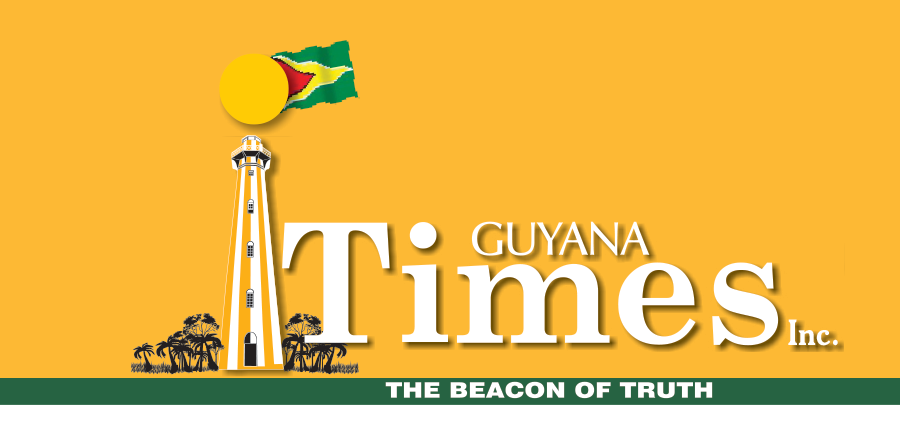– oil, gold, aluminium exempted
Amidst unease over the United States recent imposition of a 38 percent reciprocal tariff on products from Guyana, Vice President Dr Bharrat Jagdeo has assured of Government’s commitment to engaging the US Administration on this issue, urging local exporters not to panic. 
“There is no need to panic or to get shrilled about this issue,” Jagdeo said to Guyanese exporters at his weekly press conference on Thursday.
On Wednesday, US President Donald Trump announced Global Reciprocal Tariffs that will be implemented against a number of countries, on all goods that the United States imports.
Guyana is among several Caribbean and South American countries on the list. The 38 percent tariff rate that would be applied to all local exports to the US, is in response to a 76 percent tariff that Guyana was listed as imposing on US products.
According to the Vice President, the Guyana Government will engage the US to show that there was no built-in discrimination to US products coming here.
“We do not put high tariffs or non-tariff barriers to US exports. So, we’re looking forward to having that engaging with the US Government. I want to assure all of our exporters that we’ll work with them. As we learn more of the issue, we will be meeting with them, working with them to ensure that they can continue to access the US market,” the VP added.
Jagdeo noted that the Guyana Government will continue to support the business community to ensure that the welfare associated with the loss of economic output, such as jobs, are not affected.
The US’ reciprocal tariff carries exemptions on certain products including the top three commodities that Guyana exports to the North American nation.
Based on an Annex to the Executive Order signed by President Trump, instituting various percentages of tariffs for countries around the world, petroleum crude, aluminium ore and gold are exempted.
According to the Vice President, these are the highest exports to the US, with figures from 2024 showing that crude export totalled US$3.1 billion, aluminium US$36.9 million and gold US$16.6 million.
Other major exports to the North American country are fish at US$19 million, molasses, sugar and honey at US$8.7 million, alcoholic beverages at US$6.5 million, measuring/checking instruments at US$5 million, and fish at US$3.1 million.
Room for discussion
Against this backdrop, the Vice President believes that there is room to work with the US Government on the reciprocal tariff that is slated to be instituted on Guyanese products from April 9, 2025.
“From what we looked at and all we have read, it seems as though all of the countries that have higher reciprocal tariffs, are countries exporting more to the US than they are importing,” he explained.
However, Jagdeo pointed out that the UN Comtrade reports, which are submitted by each country, show there are discrepancies between the US figures versus the Guyana figures.
In 2024, Guyana reported that it exported US$3.3 billion in products to the US while importing US$2.56 billion, leading to a surplus of $799 million. But the US report to UN Comtrade shows that Guyana exported US$5.5 billion in products to the US and imported only US$1.3 billion, leading to a surplus of over US$4 billion.
According to the Vice President, based on calculations, this excessive trade surplus, which has only been in recent years, was used to calculate the tariffs.
“Clearly, there is room for us to work with the US partners to clarify this information… We want to point out to the United States of America, because we have good import data, that we are importing much more from the [US] than what is reported by the US to the UN Comtrade system,” Jagdeo said.
The Vice President noted that a revision of these figures could lead to a “significant reduction” in the trade surplus. This could potentially see a reduction on the 38 percent tariff instituted on Guyana’s exports to the US.
Moreover, another negotiating factor to be used is the fact that Guyana’s largest export, crude, is being produced by two US oil majors, ExxonMobil and Hess Corporation, which are operating in the oil-rich Stabroek Block, offshore.
“Our trade surplus is largely because of our export of oil in the last four years… So, we can clearly make that case… I think there is still room to discuss a lot of these issues with the United States,” the VP stated.
The Vice President went on to note that while Guyana and the US share strong ties, this reciprocal tariff is part of the Trump Administration’s policy to re-balance their trade, and is in no way a breakdown of the bilateral relations between the two countries.
“I see some people try to make it political, that Guyana alone facing this tariff and we are friends with the US…but this is their policy to rebalance their trade and it applies to everyone, friend or foe,” Jagdeo contended.
Discover more from Guyana Times
Subscribe to get the latest posts sent to your email.









